Work note, 2015
My work begins from a place of realizing the gap between the reality I face and social and political ideals. In this uncomfortable realization, the self demands a sense of security from within, and this demand seeks form for self-validation. Formation through painting and photography gives me a form to express myself and becomes a language for the outside world. Through that language, I try to create a rift between myself, physical reality, and the ideal.
It seems to depict a real situation, but it is not a real situation. It cannot be physically real, but I can feel the reality of the situation. I try to observe and chase the abstract distance of the ‘ideal’ from reality by easing the separation between what exists physically and what exists in the mind through visual reconstruction of shapes and scenes. By making visible that which exists but is invisible and therefore thought to be non-existent, I make it visible and therefore thought to exist. In this way, I manifest the abstractions that are placed before us.
Guests is an overlapping image of tourists inside the Alhambra Palace in Granada, Spain, and a demolition site in Bukahyeon-dong, Seodaemun-gu, Seoul, South Korea. The Alhambra Palace, a magnificent relic of Arab culture, was the home of the last Islamic royalty in Spain at the end of the 15th century. In this painting, people walking around the Alhambra, taking pictures, wander through an unidentified demolition site. The grandeur of the ruins that tourists might have expected to see is nowhere to be seen. Instead, the crumbling buildings and construction ancillaries are juxtaposed against the transparent reflection of the Alhambra. Ruins lose their markers, places lose their addresses, and people lose their whereabouts. Layered touches of paint replace the Alhambra’s historic architecture and the demolition site for the new construction, guiding the tourist’s gaze with brushstrokes. The gaze cannot find a place to rest in that seemingly familiar place. I think of the last royal family of the Alhambra, and I remember a couple who pitched a small tent in front of the demolition site in Bukahyeon-dong, braving the cold winter and barricading themselves in. Where are they sightseeing in the picture?
I extract images from photographs to create my paintings. The photograph has a story of its own, and my story begins by disturbing the image. Starting with long, broad structural lines, thin oil brushstrokes are organically layered throughout the painting. The surface of the colors, the vibrancy of the brushstrokes, and the contrasts of the colors are then covered. The organic bounce of each brushstroke draws the viewer in, and they are drawn into the flow of the whole. Each color, brushstroke, and dot creates a nuance and a sense of subject matter, so you have to stay focused on every moment of the process. Toward the end, hold your breath and observe to read the flow. I carefully add brushstrokes and leave them for a long time, and the painting is finished.
My paintings don’t have a specific process or a predetermined point of completion. However, my internal will and the physical situation that emerges during the painting process lead me to a place where the whole is formed, and I know that the work is finished when the subject, materials, and elements of the painting come together. The point at which the motivation for starting the work is manifested through the materiality of the painting becomes the point at which the work is finished. The force that pulls me to this point makes the painting appear as an undefinable impression. In this way, I throw confusion and ambiguity through realistic materials to protest against the everyday life that rolls on as if everything is fine.
작업노트, 2015
나의 작업은 개인과 직면한 현실, 또 사회적, 정치적 이상 사이의 괴리감을 깨닫는 곳에서 시작된다. 불편한 현실자각에서 자아는 내부로부터 안정감을 요구하고, 그 요구는 자기증명을 위해 형식을 구한다. 회화와 사진을 통한 조형은 나에게 나를 발현할 형식이 되고 외부세계를 향한 언어가 된다. 나는 그 언어를 통해 나와 물리적 현실, 이상 사이에 균열을 시도한다.
실제 상황을 그린 것 같으면서도 실제 상황은 아닌 듯하다. 물리적으로 실재 상황일 수 없지만, 상황의 실재감을 느낄 수 있다. 형상, 장면의 시각적 재조형을 통해 물리적으로 존재하는 것과 생각으로 존재하는 것의 분리를 완화함으로써 현실로부터 ‘이상’이 가지는 추상적 거리감을 가까이서 목격하고 추격하려 한다. 존재하지만 가시적이지 않아 존재하지 않는 것처럼 여겨지는 것들을 가시화함으로써 존재하는 것으로 여겨지게 한다. 이런 방식으로 나는 우리에게 놓인 추상을 현현화 한다.
그림 손님들은 스페인, 그라나다에 있는 알함브라 궁전 안 관광객들의 모습과 서울 서대문구 북아현동의 철거장 모습을 오버랩하여 그린 작업이다. 웅장한 아랍 문화의 유적이 새겨져 있는 알함브라 궁전은 15세기말 스페인에서의 마지막 이슬람 왕족이 머물렀던 곳이다. 알함브라 궁전에서 사진을 찍고 거닐던 사람들은 이 그림 안에서 어딘지 알 수 없는 철거 현장을 유랑한다. 관광객들이 기대했을 유적지의 웅대한 모습은 묘연히 자취를 감추었다. 다만 그곳엔 허물리는 건물들과 공사장의 보조물들이 알함브라 궁전의 투명하게 비치는 모습과 뒹굴어 놓여 있을 뿐이다. 유적은 표지를 잃고 장소는 주소를 잊고 사람들은 행방을 잃는다. 겹겹이 쌓인 물감 터치들이 알함브라 궁전의 오랜 역사적 건축물과 신축을 위한 철거장의 모습을 대신하고 관광 온 이들의 시선을 붓질로 인도한다. 그 알 듯 말 듯 한 곳에서 시선도 머물 곳을 찾지 못한다. 어떤 기준이 보존하고 누려야 할 가치를 분별하게 하는가. 나는 알함브라 궁전의 마지막 왕가를 떠올리며, 북아현동의 철거장 앞에서 작은 텐트를 치고 추운 겨울을 견디며 홀로 농성했던 한 부부를 기억한다. 그림 속의 그들은 어디를 관광하고 있는 걸까?
나는 사진에서 이미지를 추출해 그림을 그려나간다. 사진은 스스로 이야기를 가지고 있는데 그 이미지를 교란시키며 나의 이야기는 시작된다. 길고 크게 나뉘는 구조적인 선들로 시작하여 얇은 유화의 붓질들은 그림 전체에 유기적으로 켜켜이 쌓여간다. 그리하여 색의 면과 붓질의 생생함, 색이 이루는 명암들로 뒤덮인다. 서로의 붓질들이 주조하는 유기적인 반동이 시선을 이끌어가고, 전체의 흐름 안에 포섭되어 간다. 색과 붓질, 점 하나가 뉘앙스를 만들고 주제를 감지하게 하기 때문에 과정 매 순간 집중하여 진행해야 한다. 마지막에 가까워지면 숨을 죽이고 관찰하여 흐름을 읽는다. 조심스레 붓질을 가감하고 한참을 삭혀둔다. 그렇게 그림은 마감된다.
내 회화는 구체적인 과정이나 완성의 지점이 미리 정해져 있지 않다. 다만 내부적 의지와 그려나가는 과정 속에서 나타나는 물리적 상황을 주시하며 전체를 형성하는 곳으로 나아가고, 주제와 소재, 회화요소들이 맞물려 갈 때 작업이 끝나감을 알 수 있다. 작업의 시작 동기가 회화적 물성을 통해 모습을 드러내는 지점이 작업을 마치는 지점이 된다. 이 지점으로 끌고 가는 힘은 그림을 정의할 수 없는 묘한 인상으로 보이게 한다. 그렇게 현실적 소재를 통해 헷갈림과 애매함을 투척하여 멀쩡한 듯이 굴러가는 일상에 항거한다.
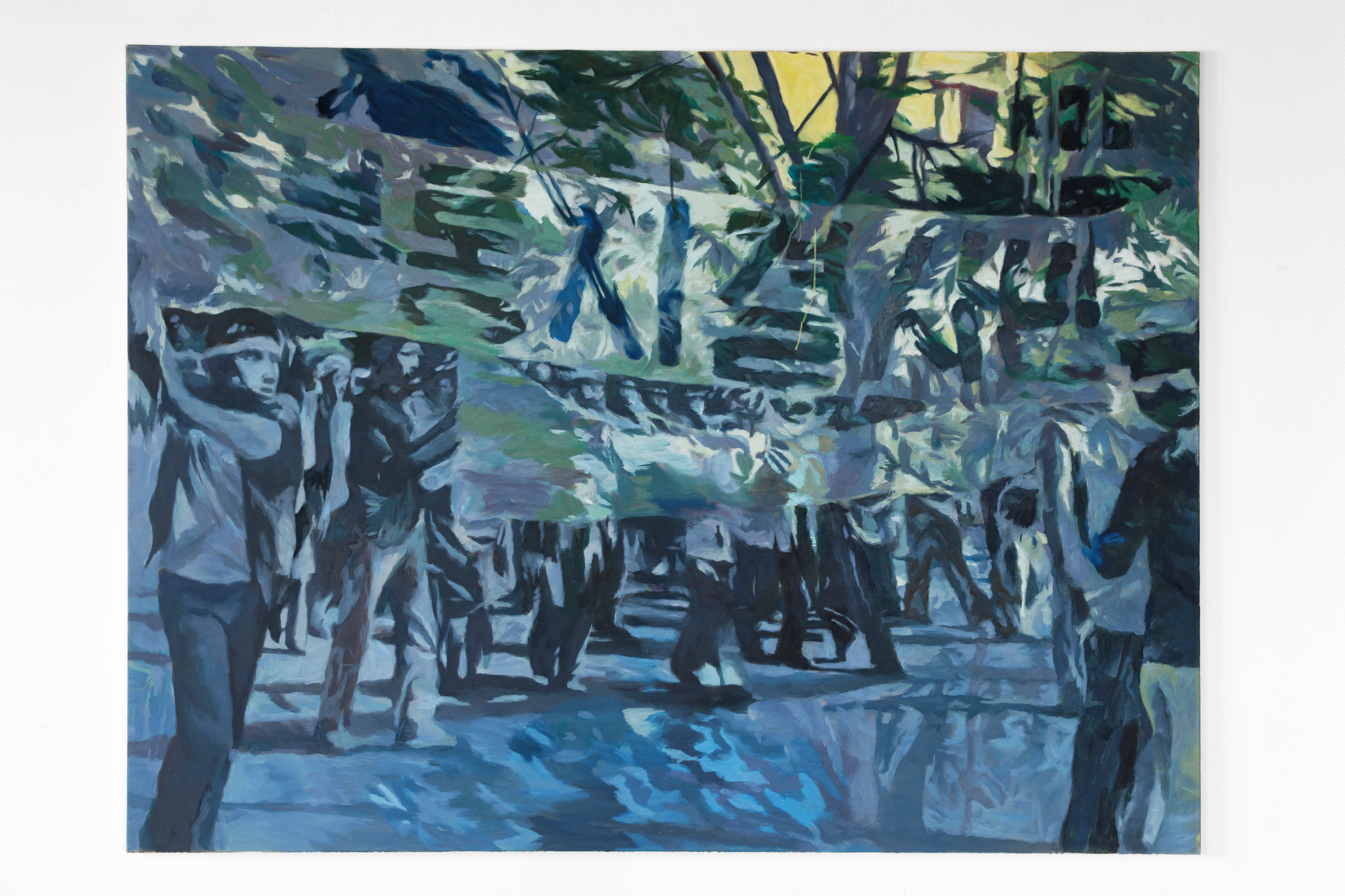
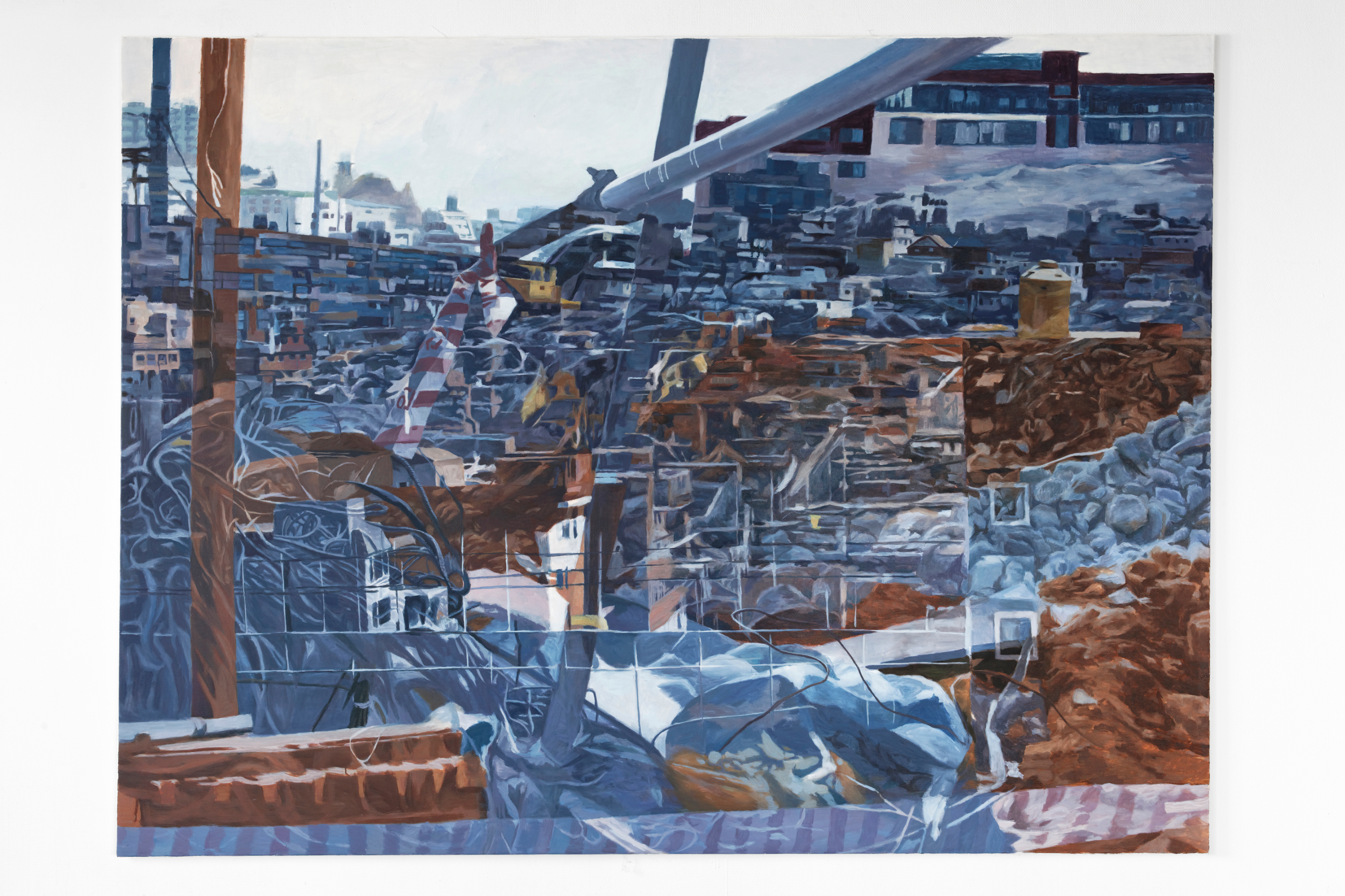
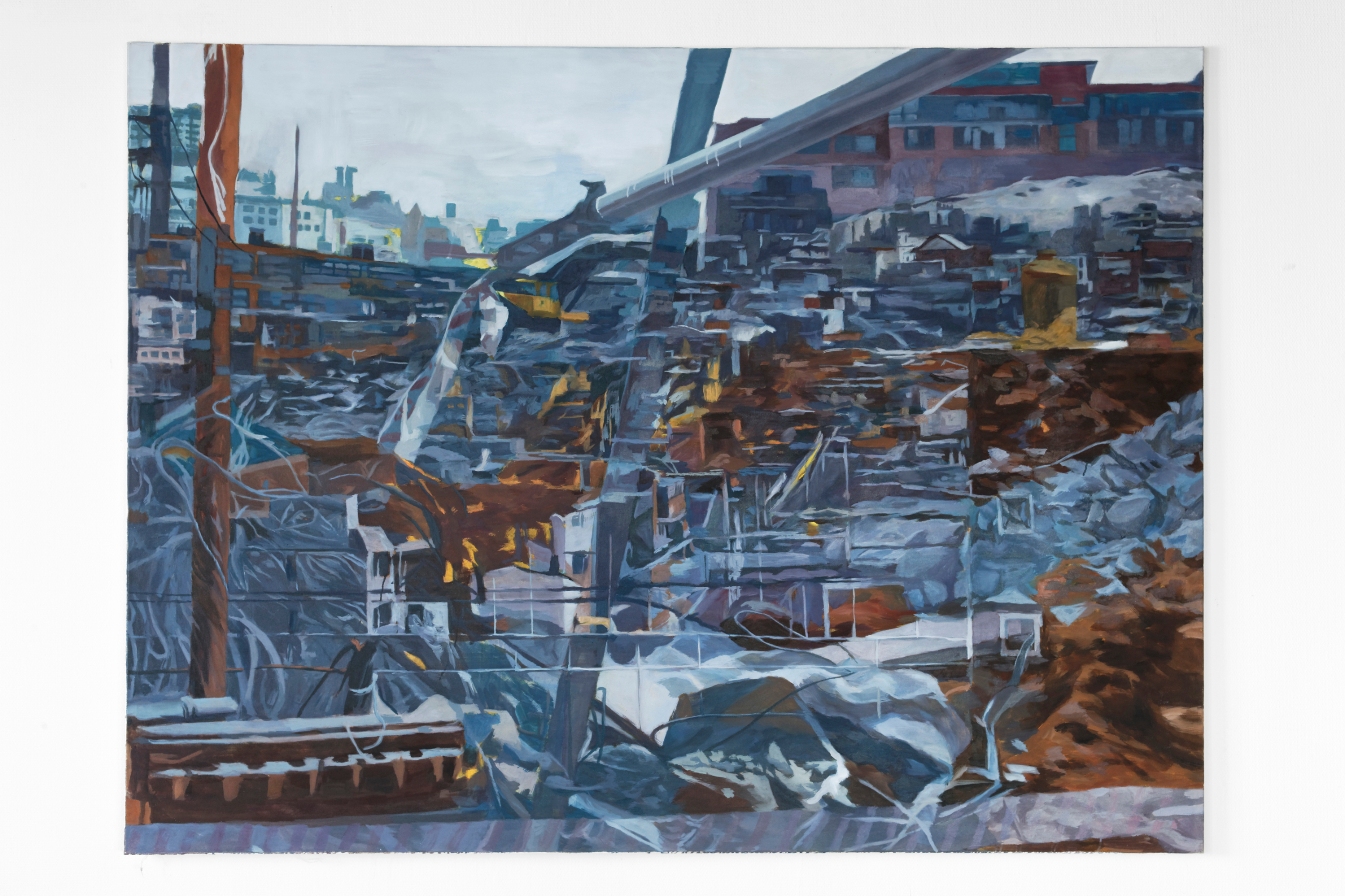
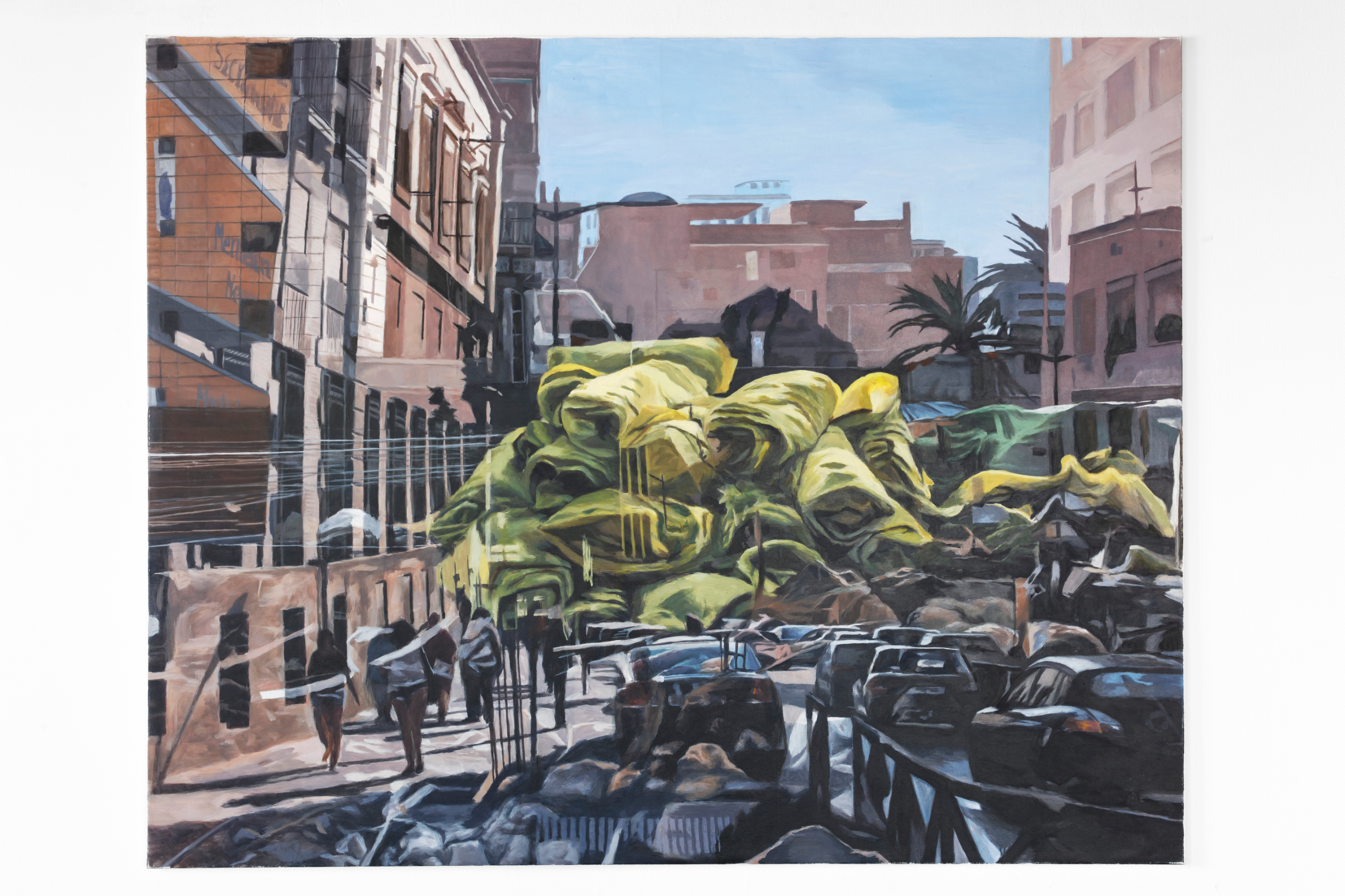
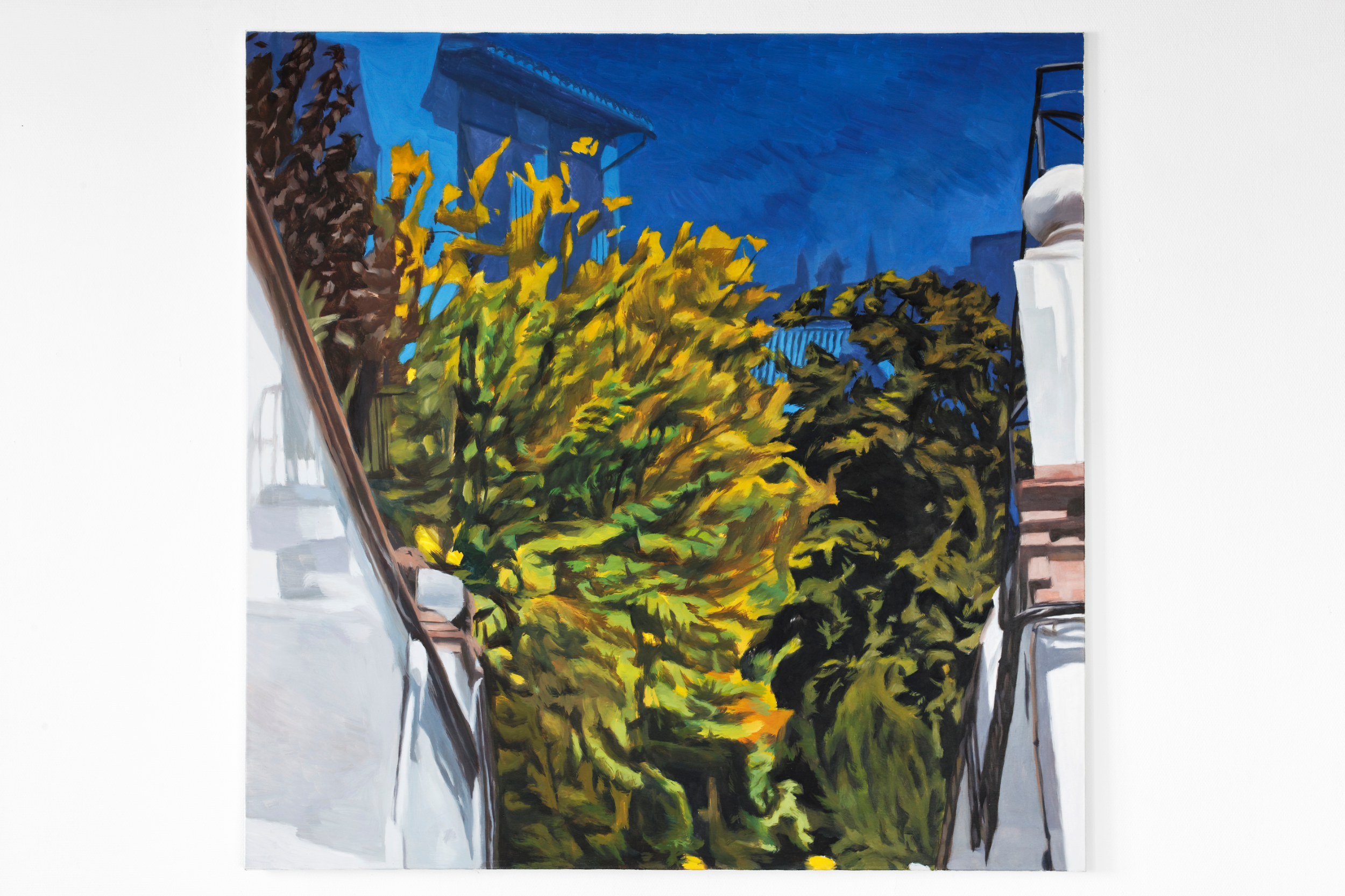
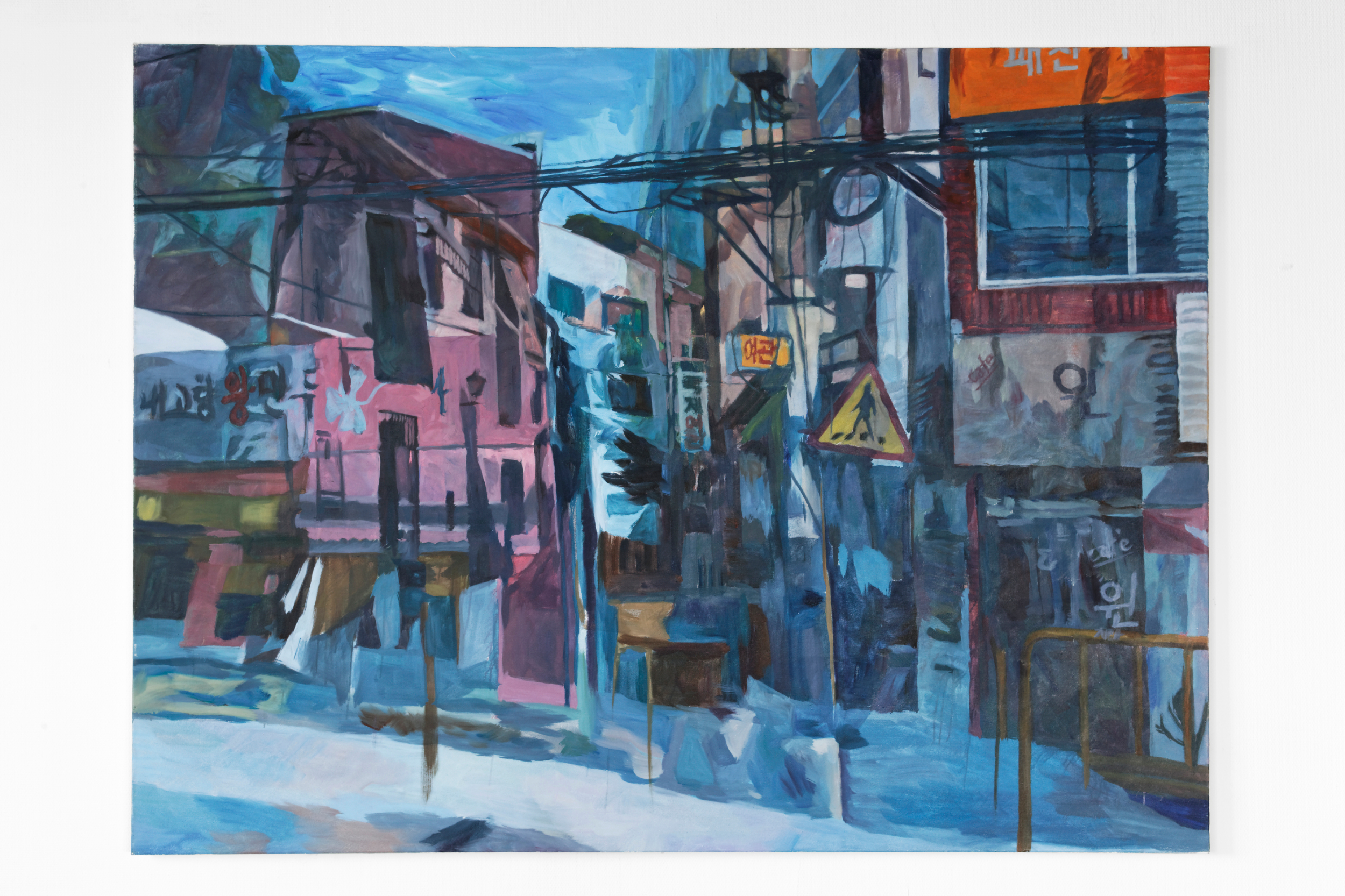
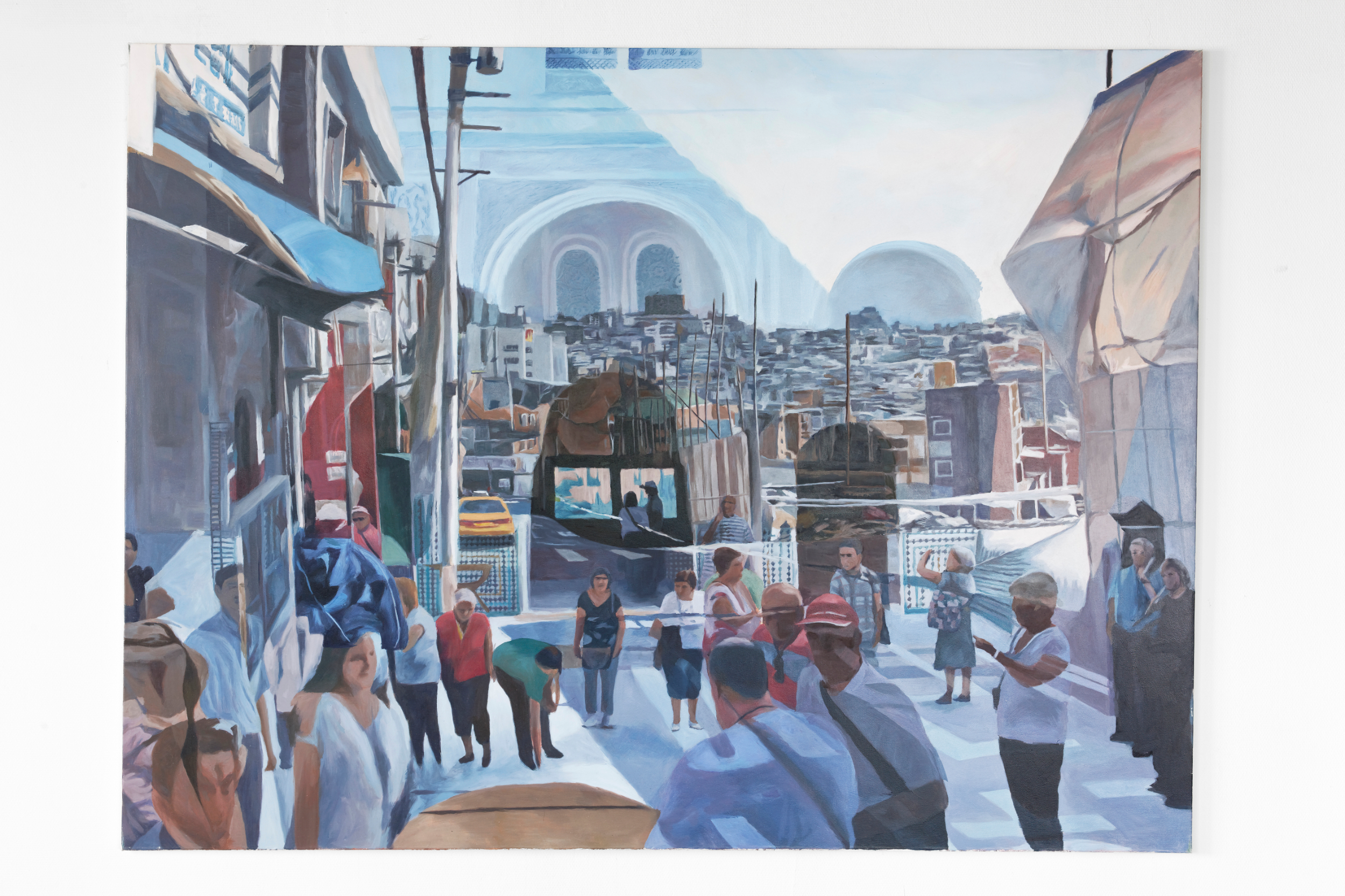
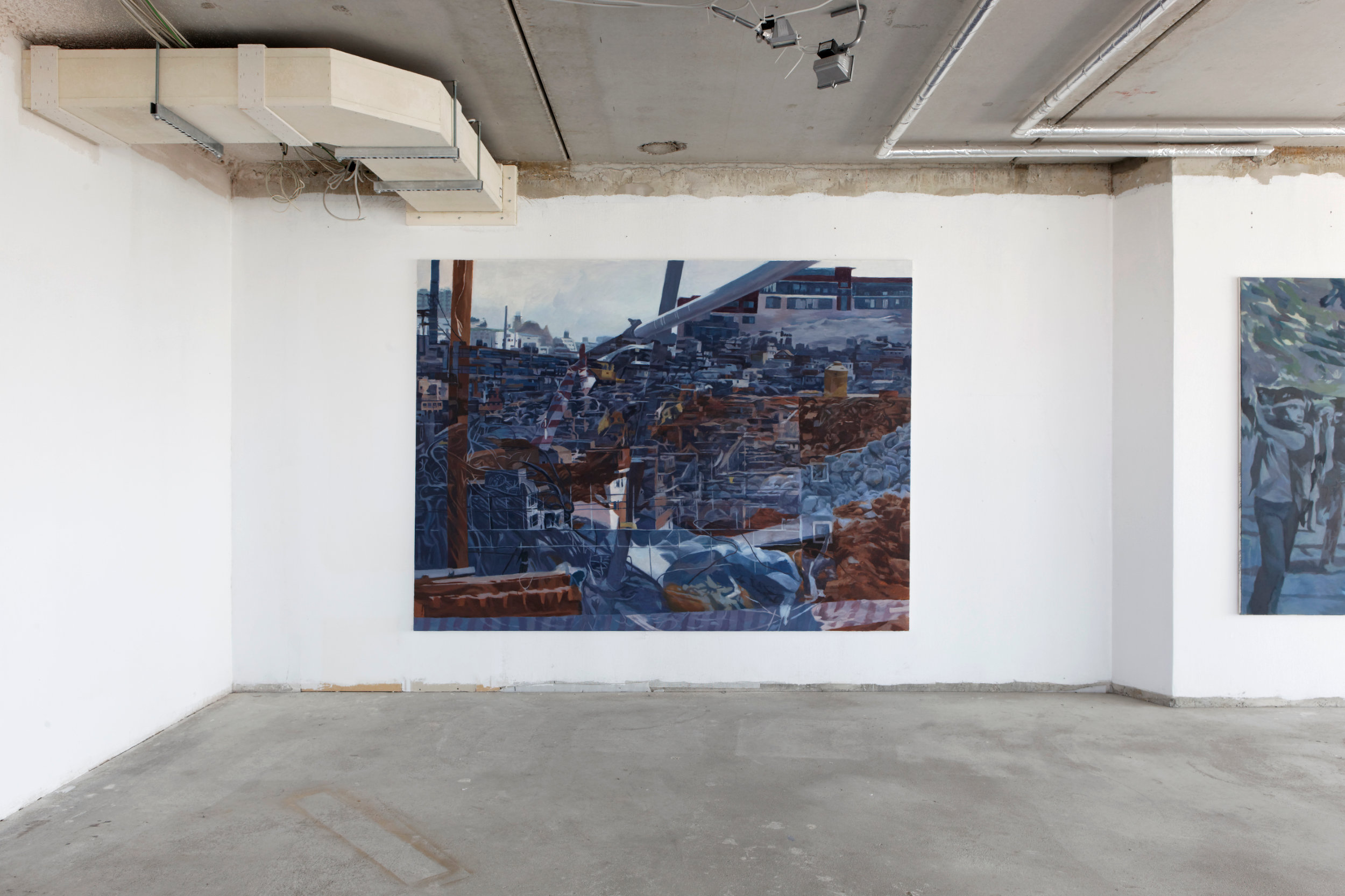
Photo: Carsten Eisfeld
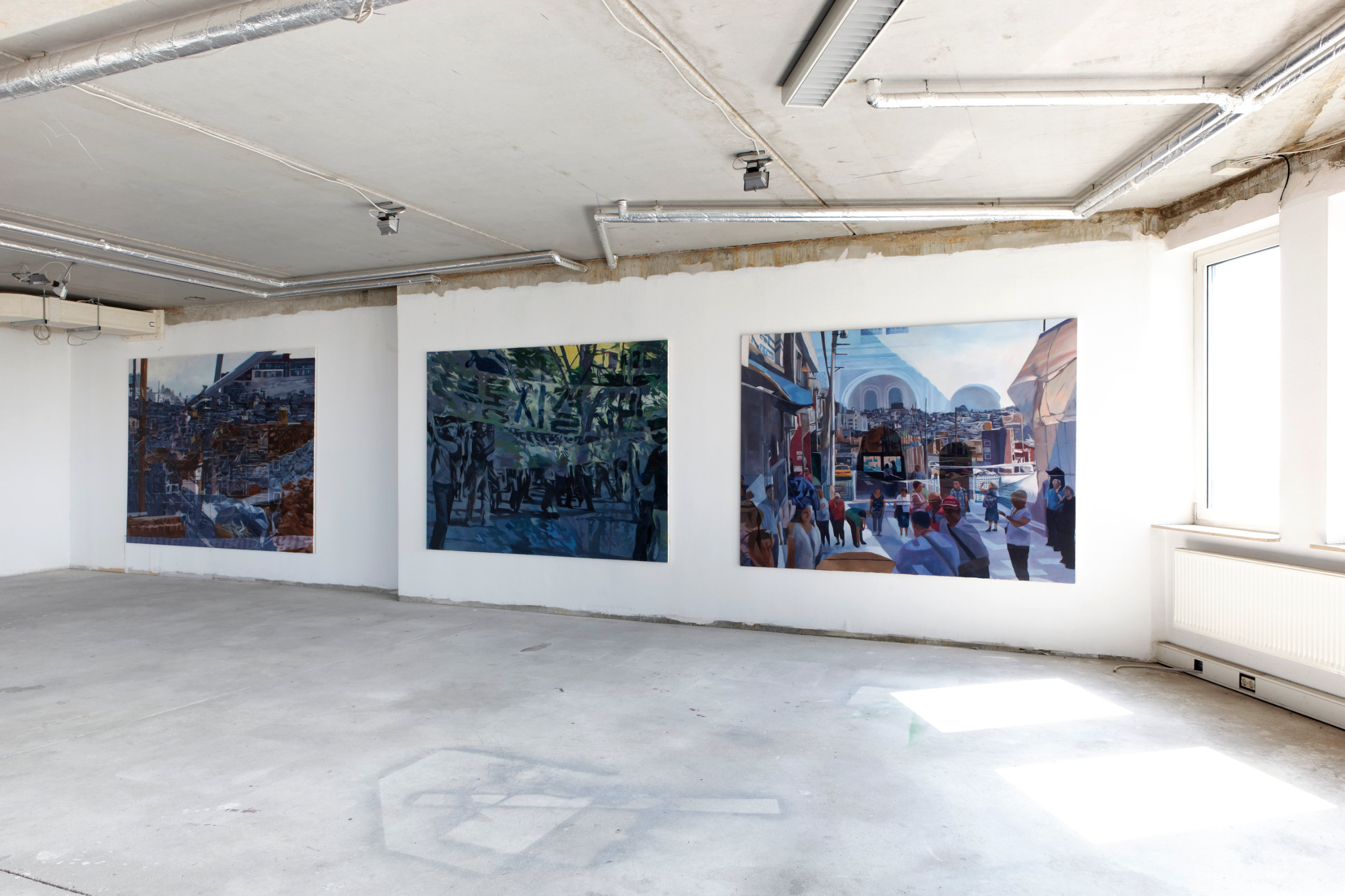
Photo: Carsten Eisfeld
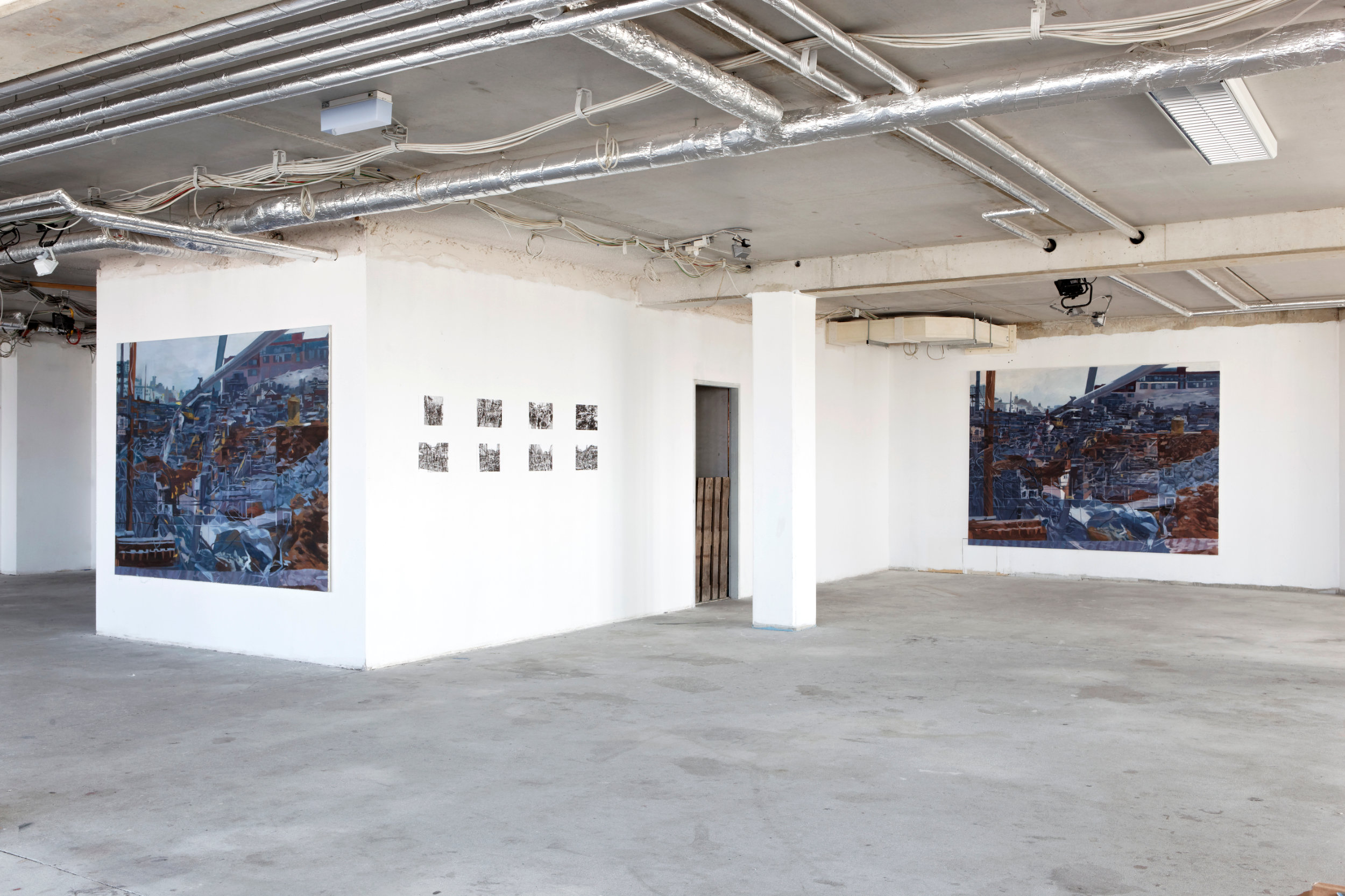
Photo: Carsten Eisfeld
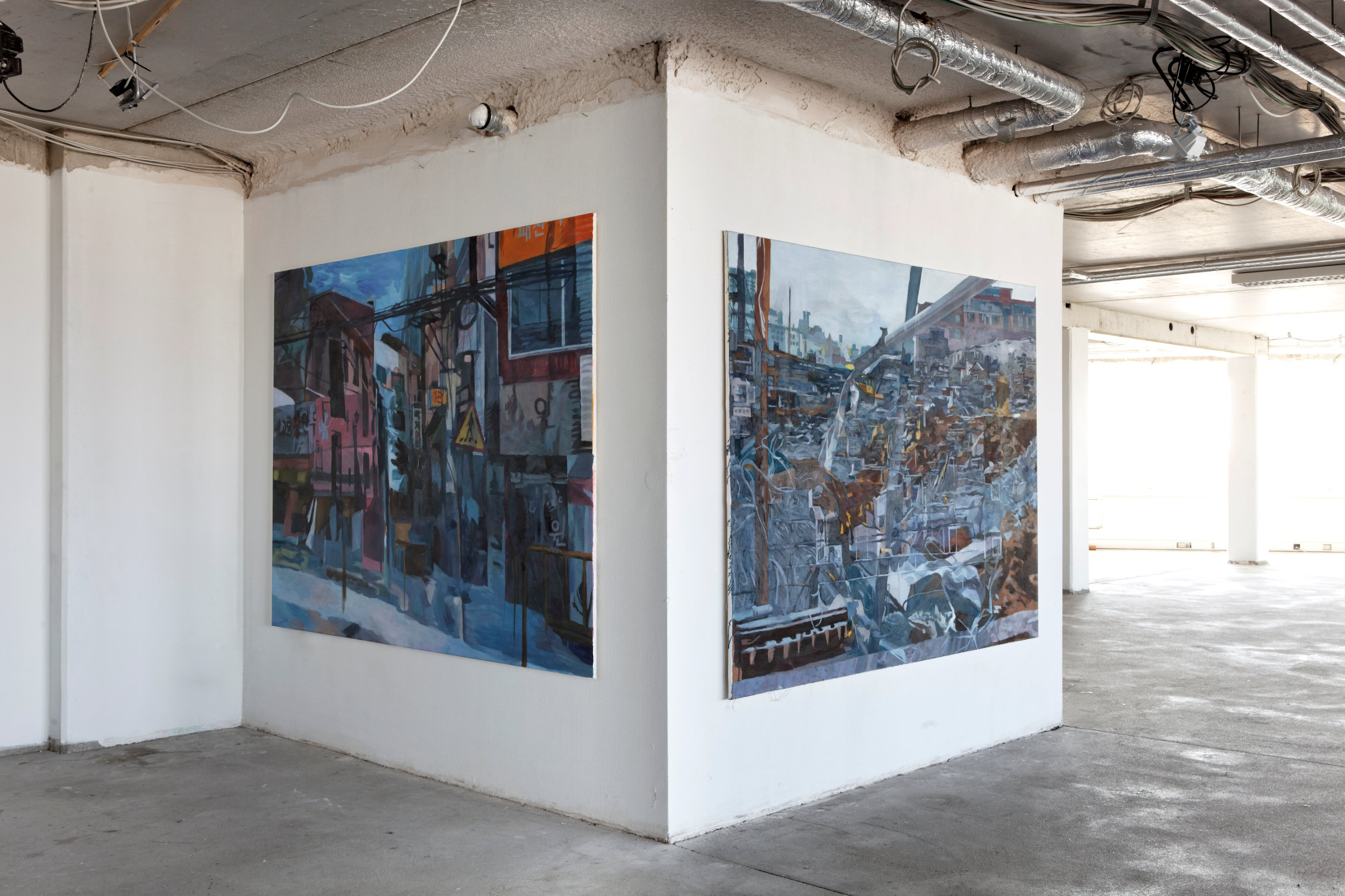
Photo: Carsten Eisfeld
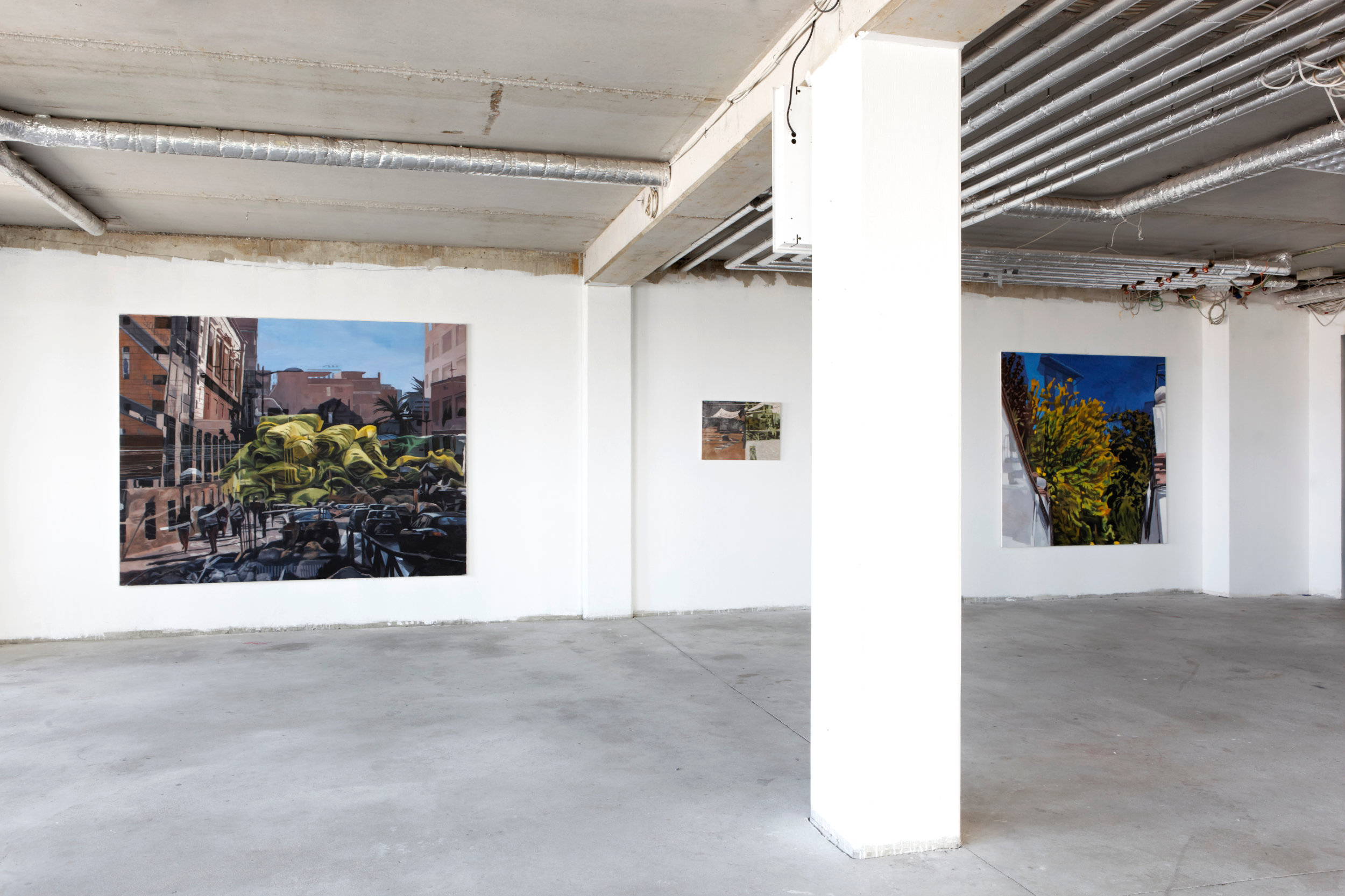
Photo: Carsten Eisfeld
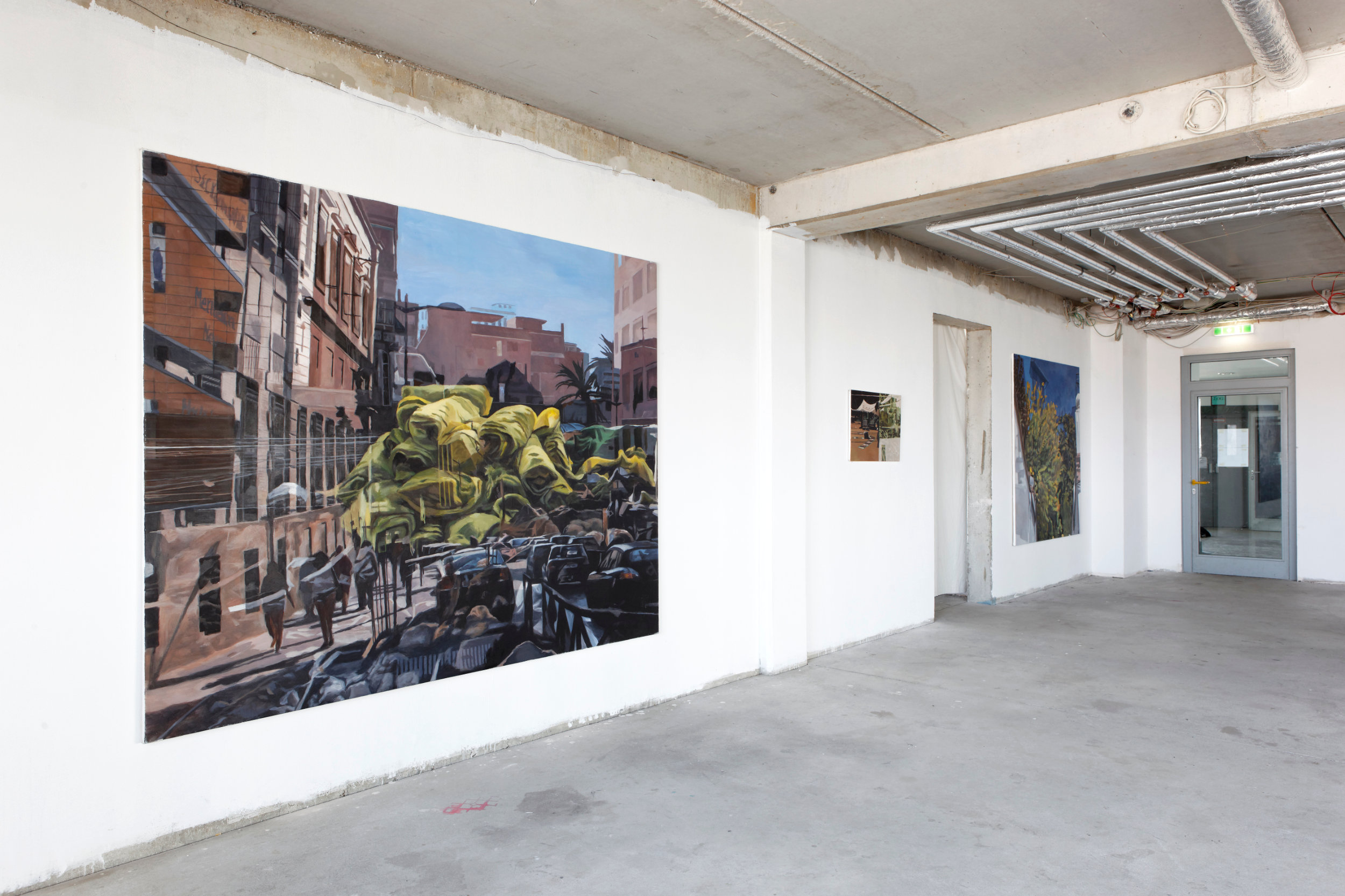
Photo: Carsten Eisfeld
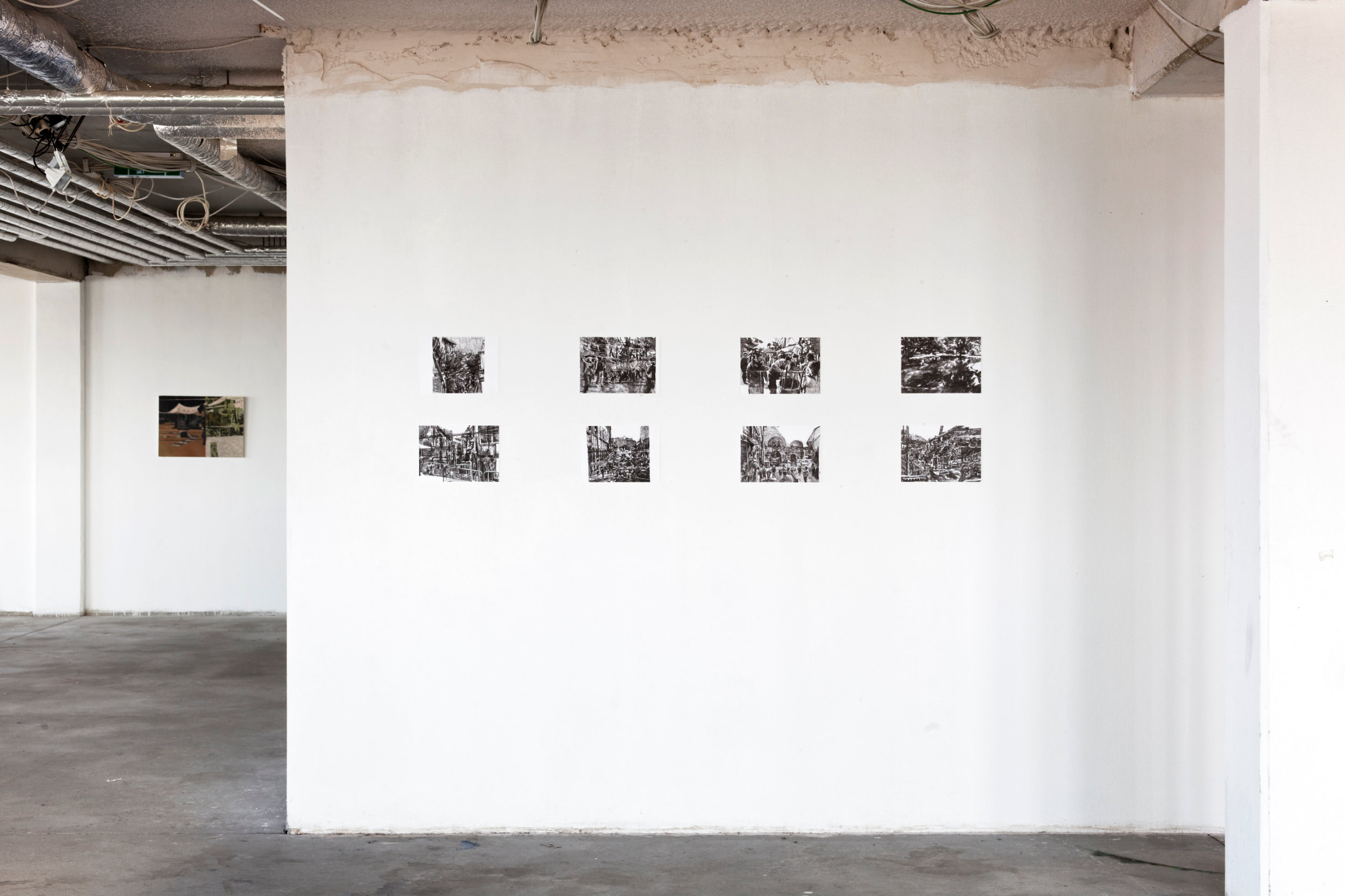
Photo: Carsten Eisfeld
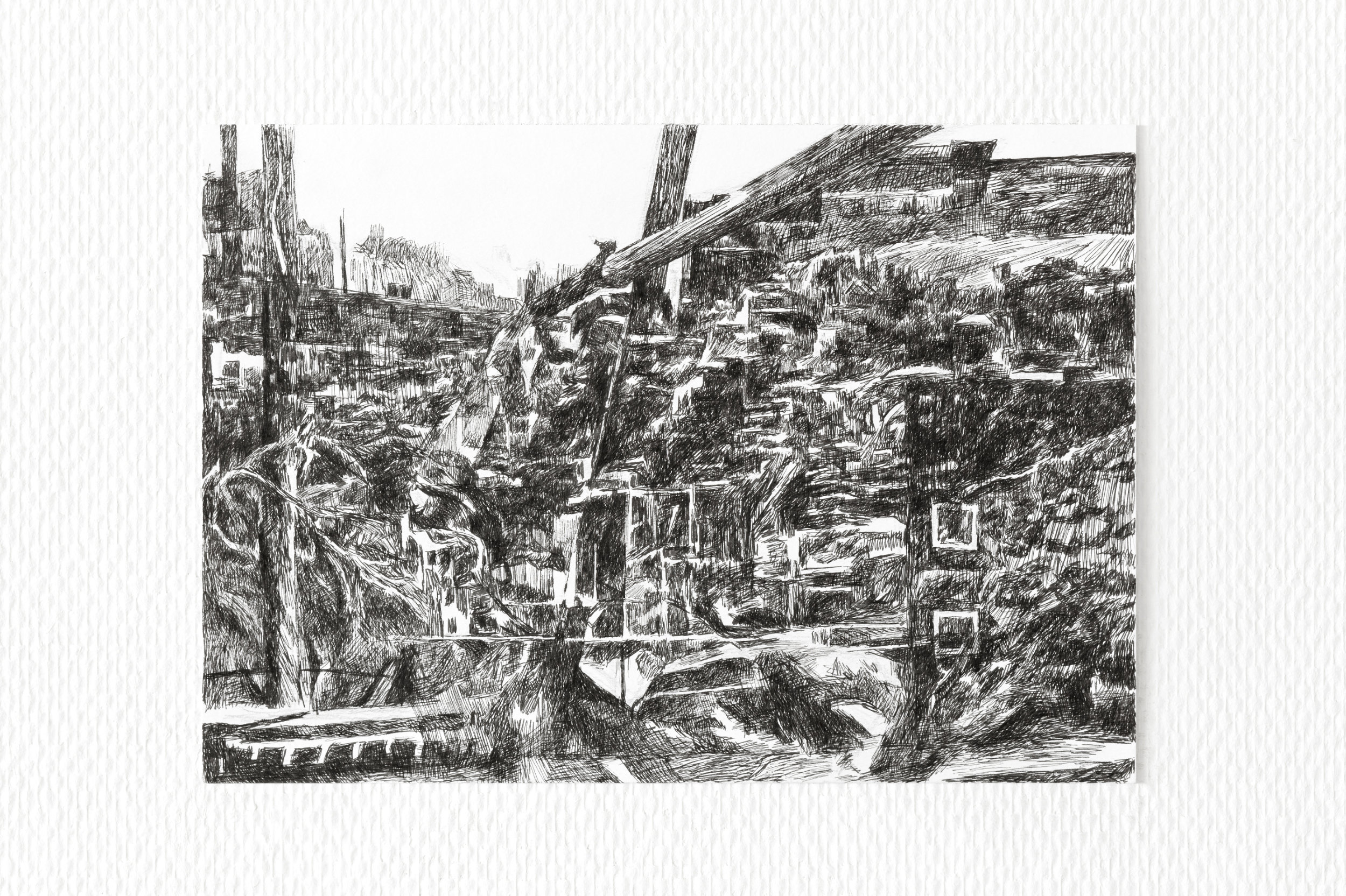
Photo: Carsten Eisfeld
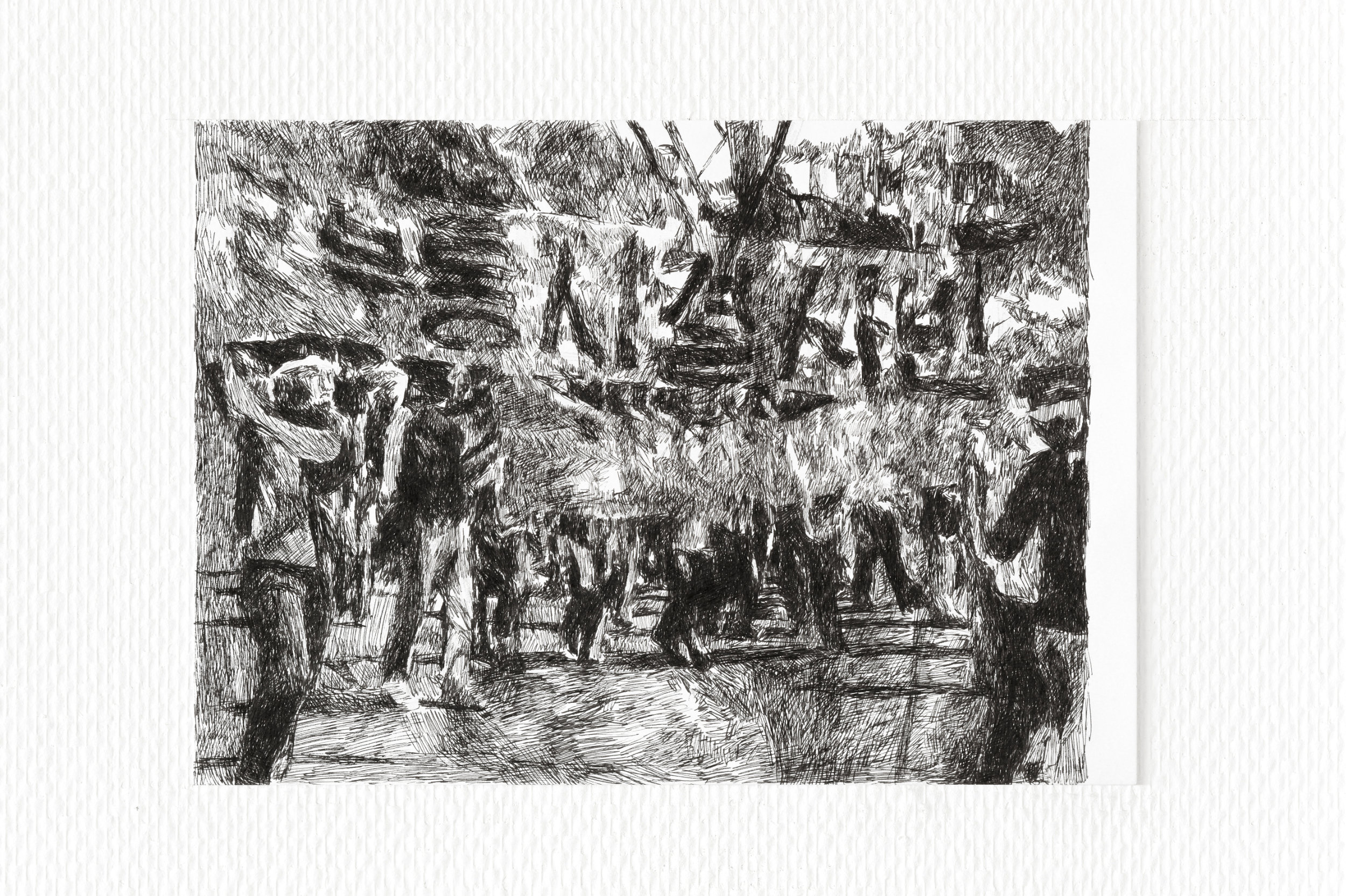
Photo: Carsten Eisfeld
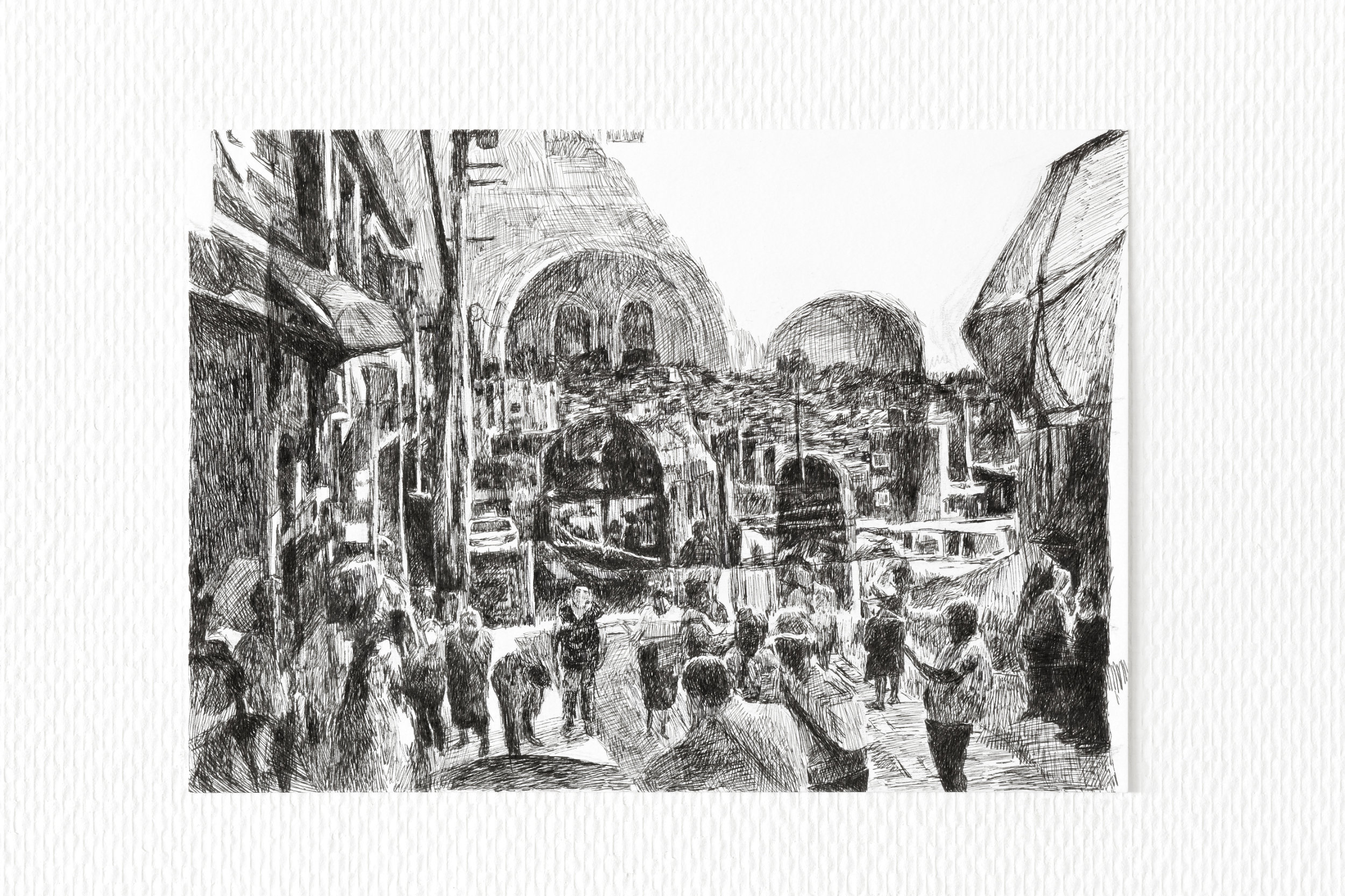
Photo: Carsten Eisfeld
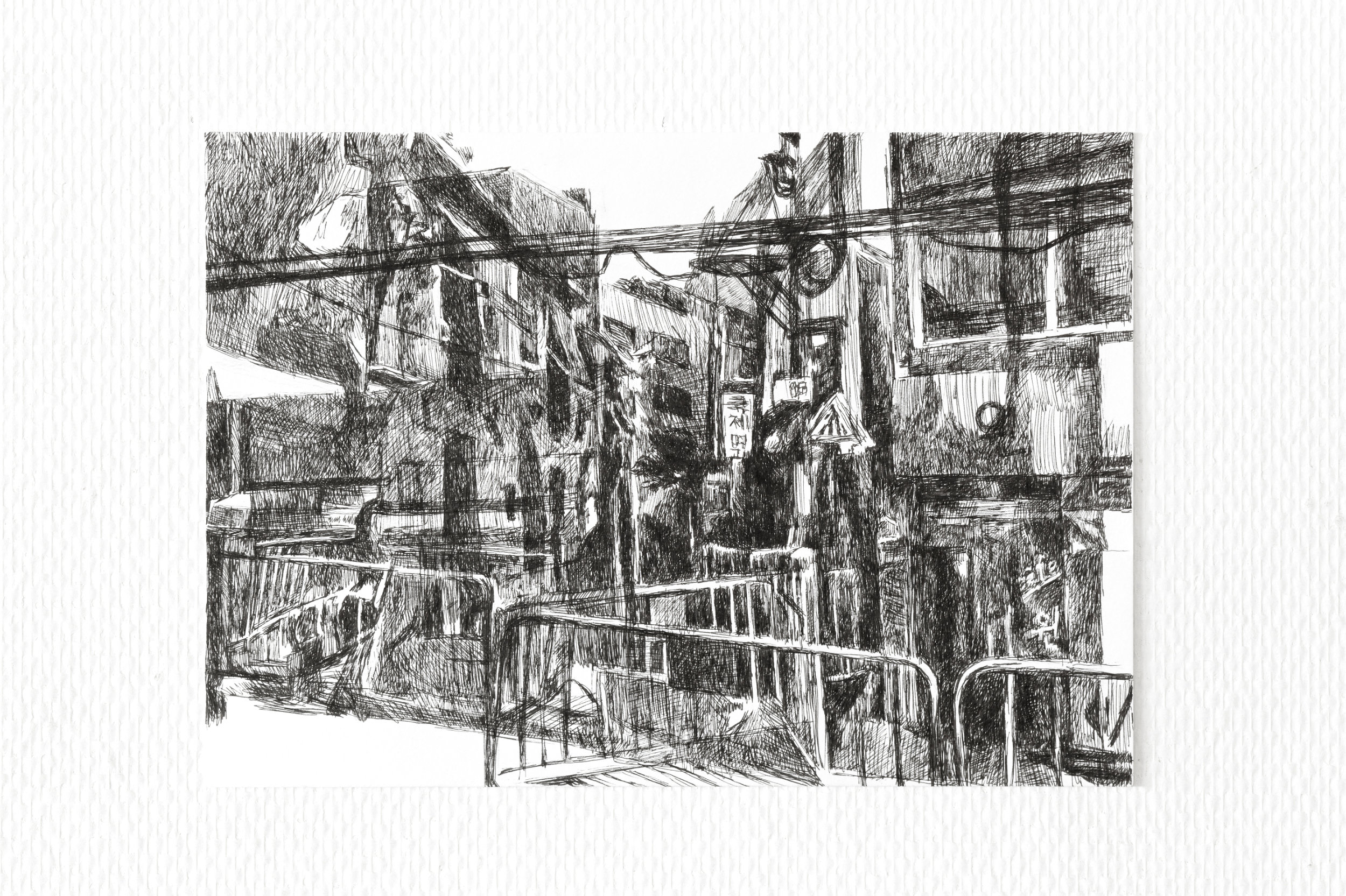
Photo: Carsten Eisfeld
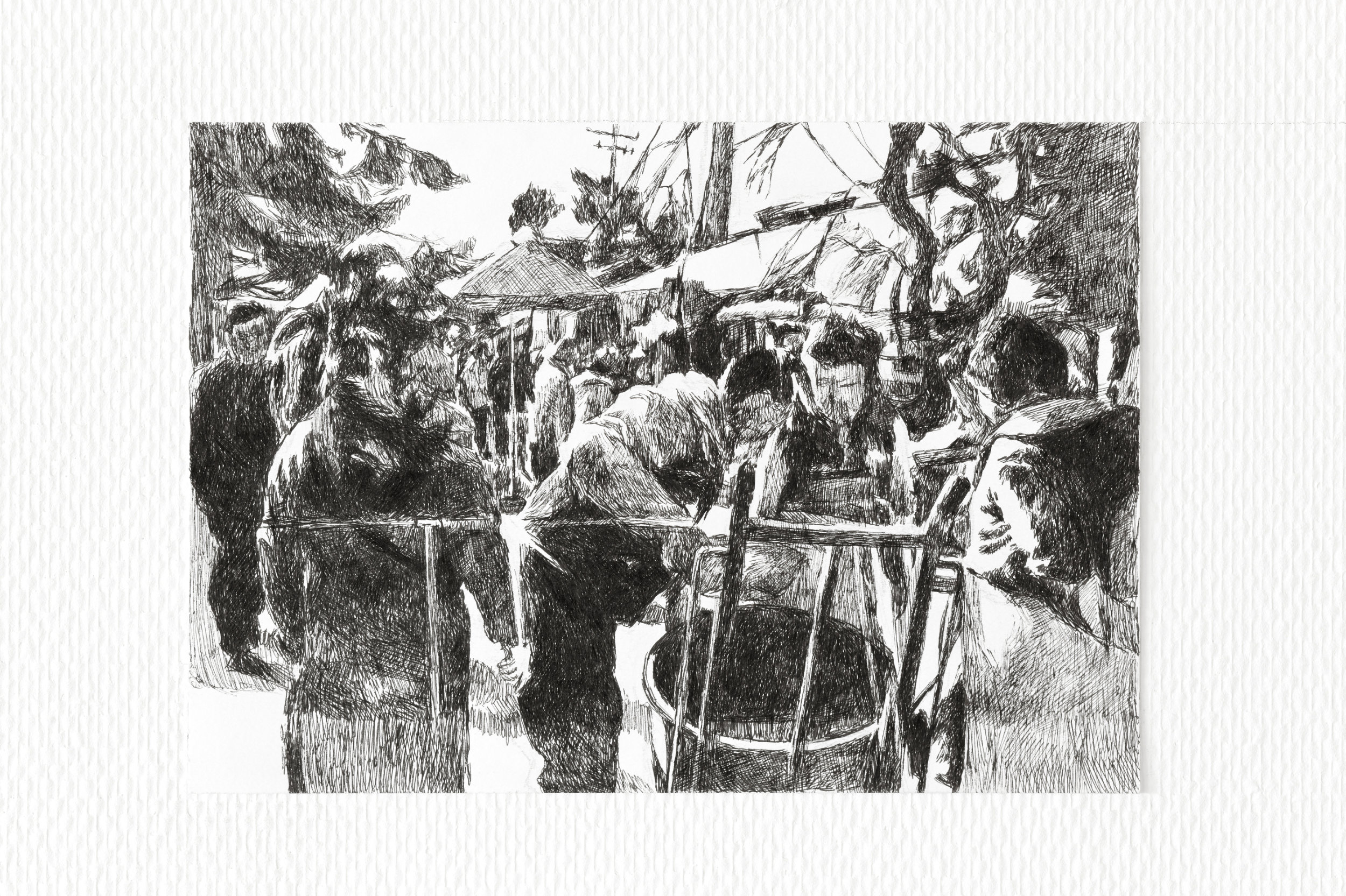
Photo: Carsten Eisfeld
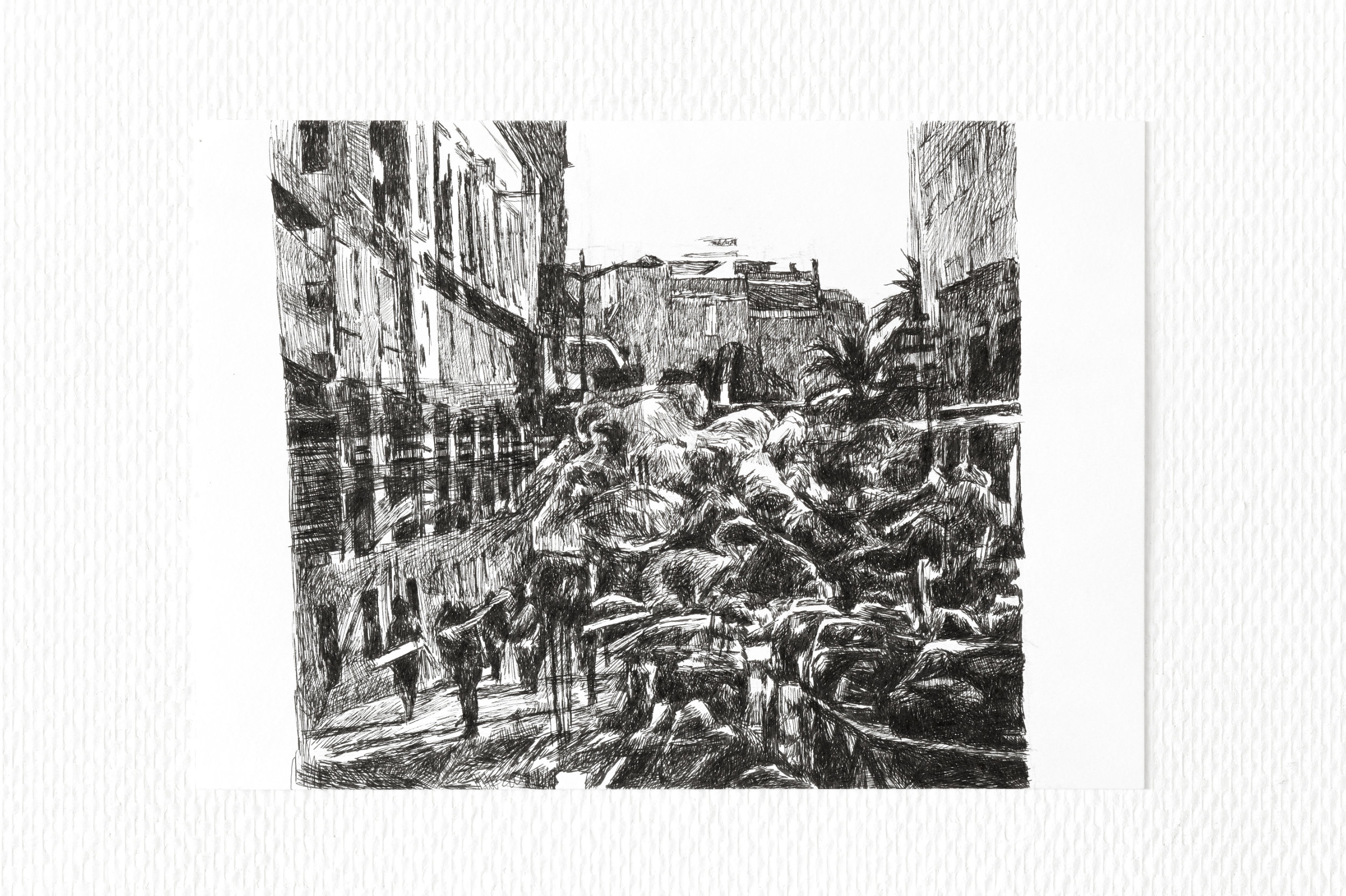
Photo: Carsten Eisfeld
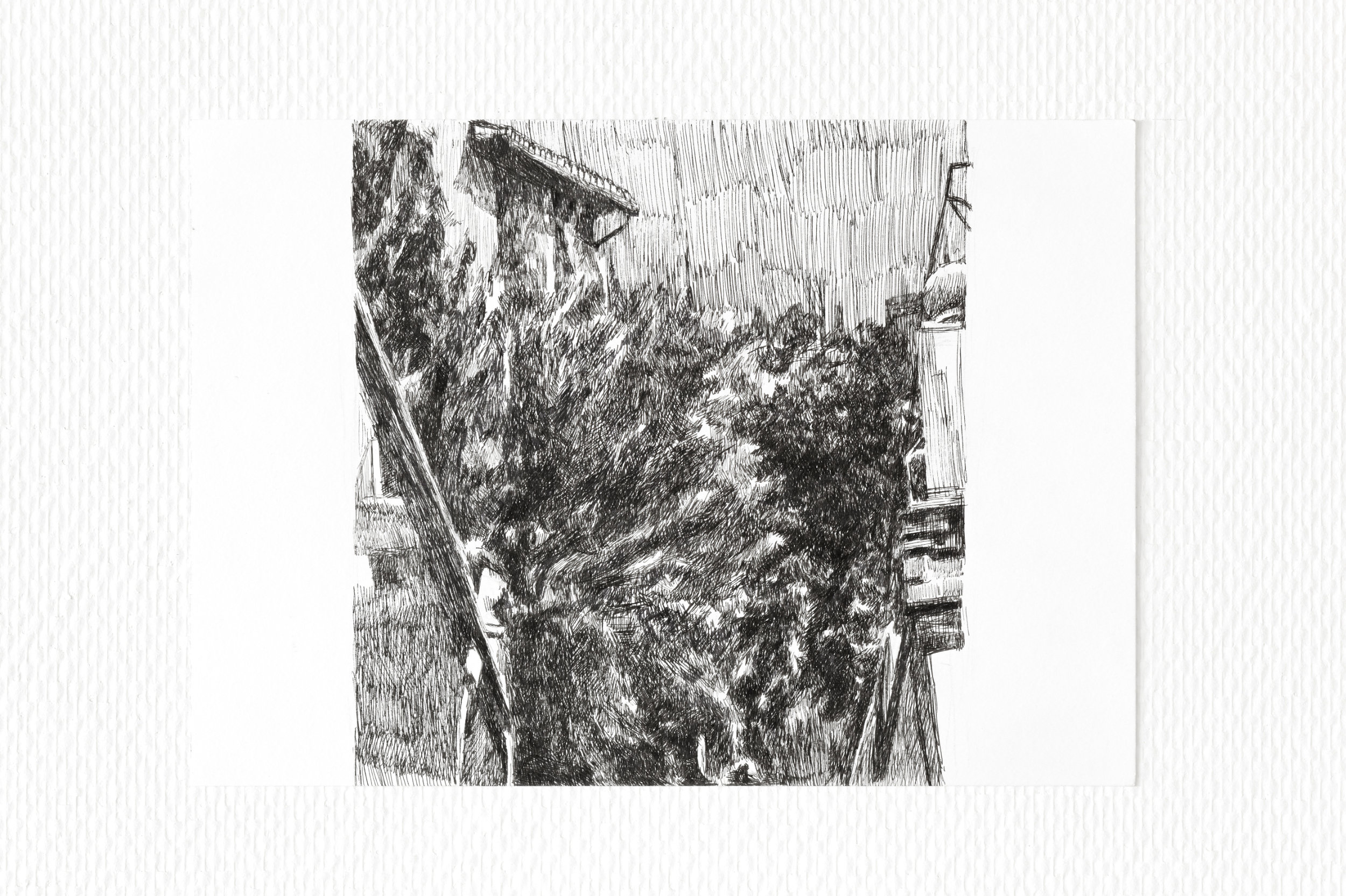
Photo: Carsten Eisfeld